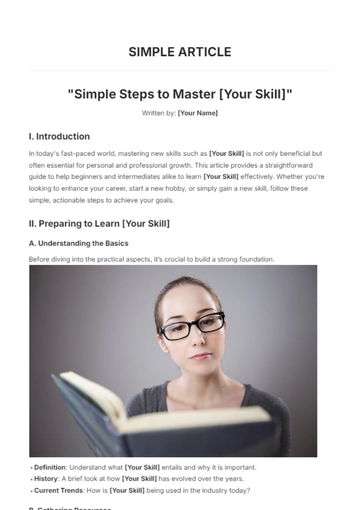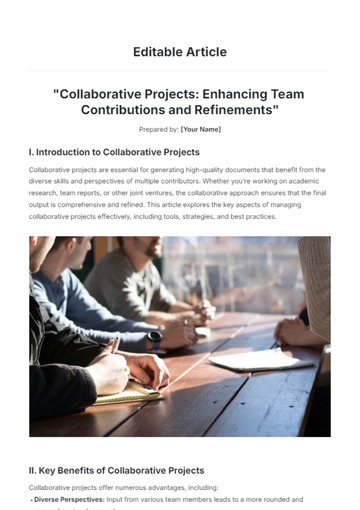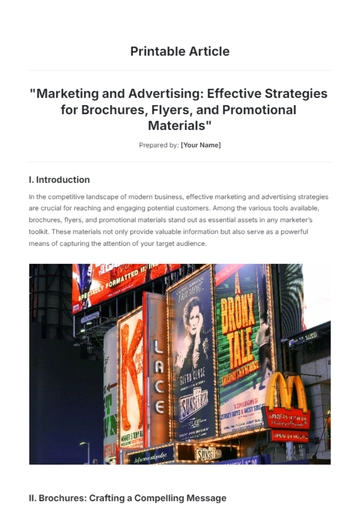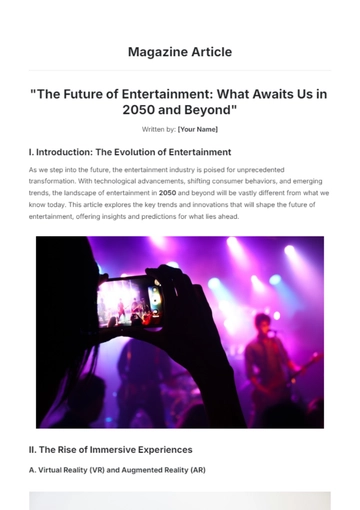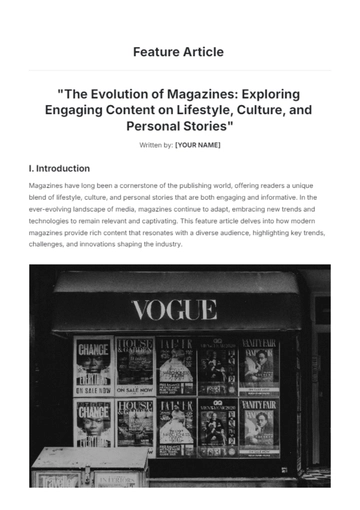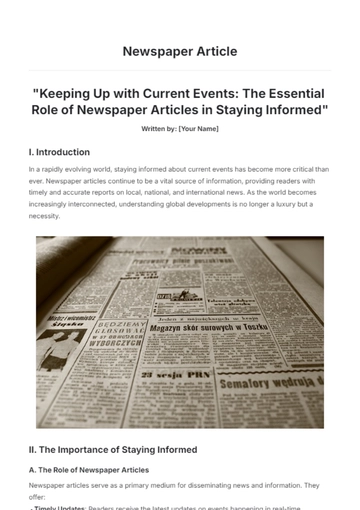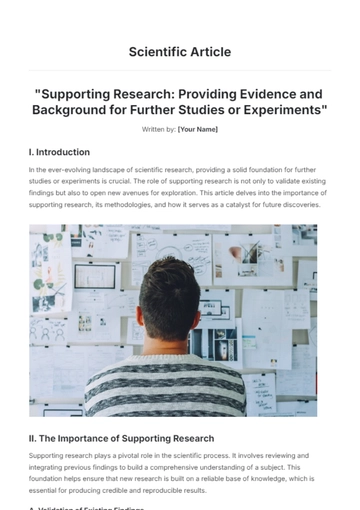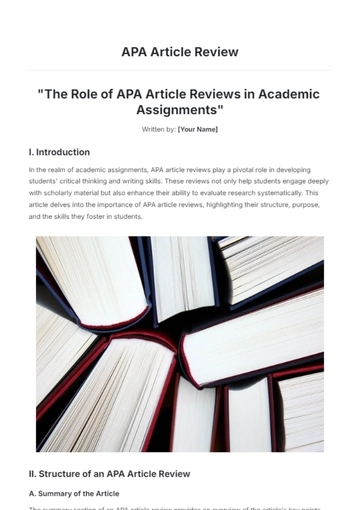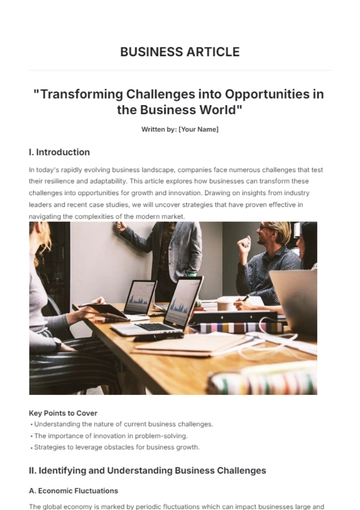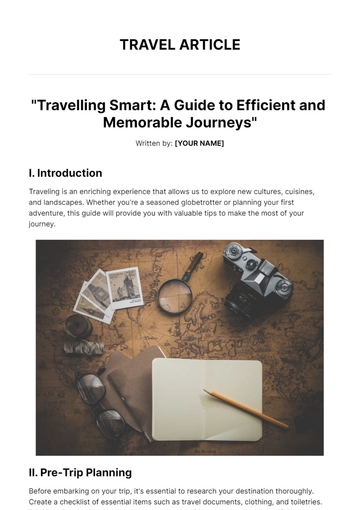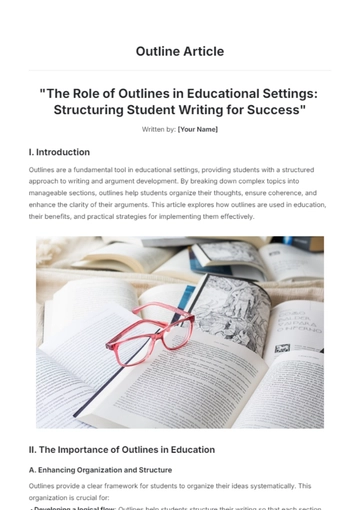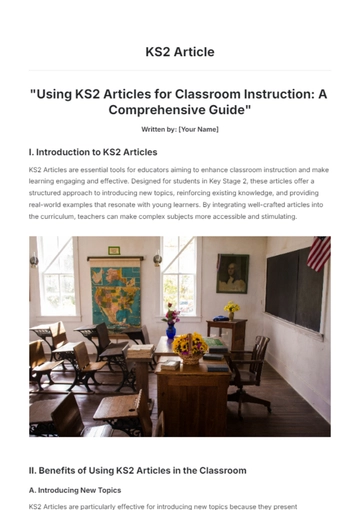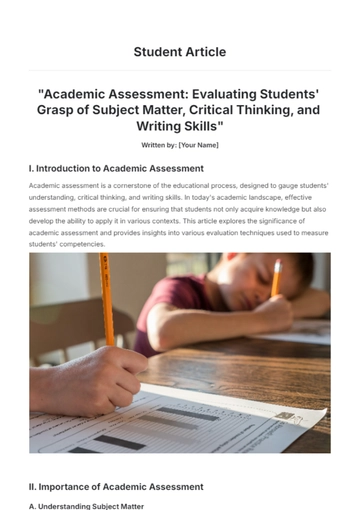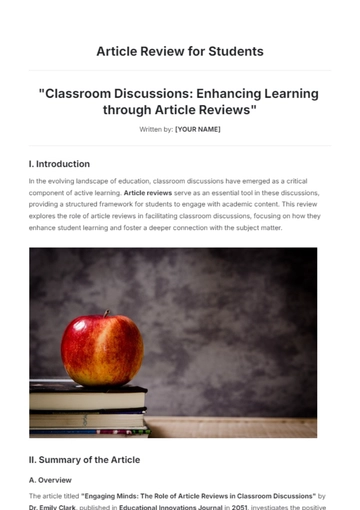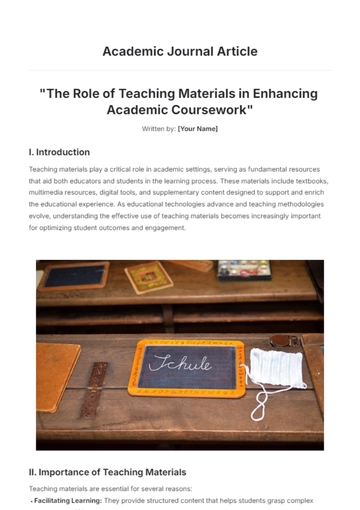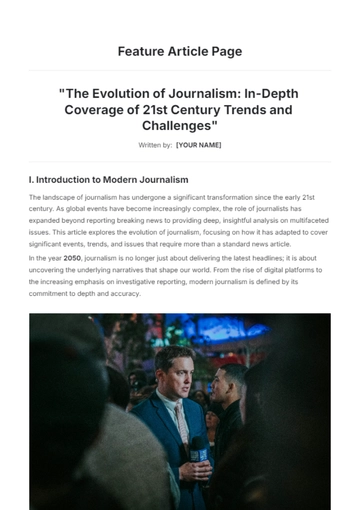Free Middle School Article

"Middle School Challenges and Opportunities"
Prepared by: [Your Name]
I. Introduction

Middle school years are a pivotal time in the educational and personal development of adolescents. These years, which typically encompass grades 6 through 8, mark a transition from elementary school to a more complex and challenging high school environment. Understanding the unique challenges and opportunities of this phase can facilitate a smoother experience for students, educators, and parents alike. In this article, we explore the academic, social, and emotional aspects of middle school life, providing insights and strategies to navigate these formative years successfully.
II. Academic Challenges and Support Strategies
Academic rigor increases significantly throughout middle school, presenting students with new challenges and responsibilities. To succeed, students must adapt to diverse teaching styles, manage more complex assignments, and develop effective study habits.
A. Common Academic Difficulties

Adjusting to increased coursework and higher expectations.
Transitioning from one primary teacher to multiple subject-specific teachers.
Developing skills for independent and group study projects.
B. Effective Support Strategies
Create a structured schedule: Help students plan their study time and balance extracurricular activities.
Utilize school resources: Encourage the use of tutoring and counseling services provided.
Foster a supportive home environment: Regularly discuss academic challenges and acknowledge successes.
III. Navigating Social Dynamics
As students transition into adolescence, social relationships significantly influence their middle school experience. The formation of social identity and the pressure to fit in can be overwhelming. Thus, understanding these dynamics is crucial for emotional and social well-being.
A. Common Social Challenges

Navigating newfound social hierarchies and peer pressure.
Building and maintaining friendships amidst changing social circles.
Dealing with bullying and cyberbullying issues.
B. Strategies for Positive Social Interaction
Encourage participation in extracurricular activities to broaden social networks.
Teach and model empathy and respectful communication.
Maintain open lines of communication about the value of true friendships over popularity.
IV. Emotional Development and Support
Middle schoolers undergo significant emotional changes that can affect their academic and social lives. Recognizing and addressing these emotional shifts is vital for fostering a healthy school environment.
A. Key Emotional Milestones

Developing a sense of self amidst rapidly changing personal and social spheres.
Experiencing an increased need for independence and privacy.
Handling more intense feelings and mood swings.
B. Emotional Support Mechanisms
Promote the development of emotional intelligence skills.
Implement programs and workshops that focus on mental health.
Ensure access to school counselors and psychologists as needed.
V. Conclusion
Middle school doesn't have to be a turbulent time for students and their families. By recognizing the challenges and opportunities these years offer and deploying targeted strategies, educators and parents can effectively support the holistic development of middle schoolers. Together, we can turn these potentially challenging years into a period of tremendous growth and discovery.
- 100% Customizable, free editor
- Access 1 Million+ Templates, photo’s & graphics
- Download or share as a template
- Click and replace photos, graphics, text, backgrounds
- Resize, crop, AI write & more
- Access advanced editor
Introducing the Middle School Article Template from Template.net! Crafted for ease, it's fully editable and customizable, tailored for budding writers. Streamline your work with our Ai Editor Tool, offering seamless editing. Elevate your content effortlessly with this versatile template, designed to ignite creativity and streamline your writing process.


